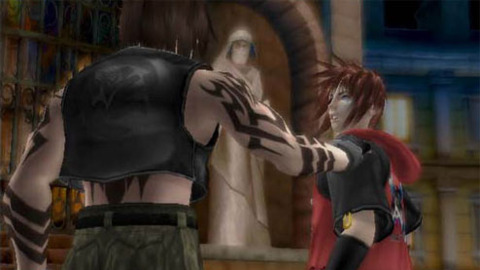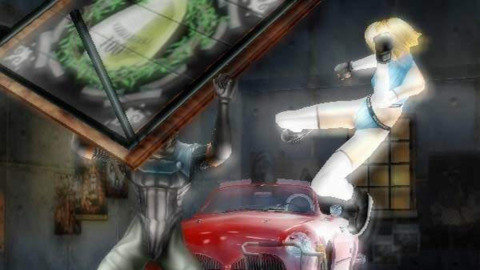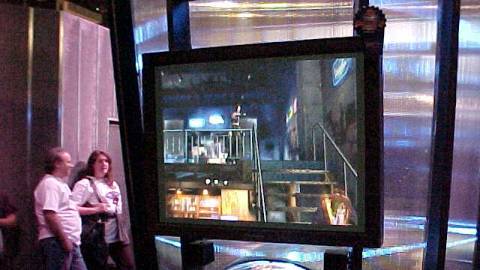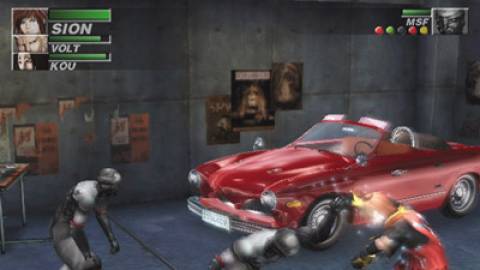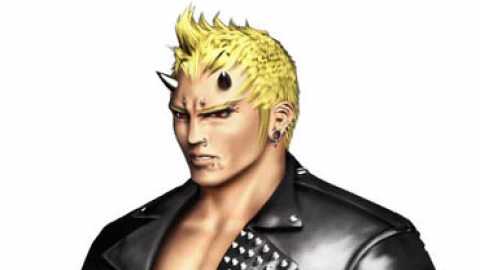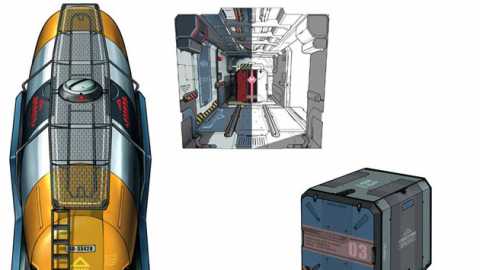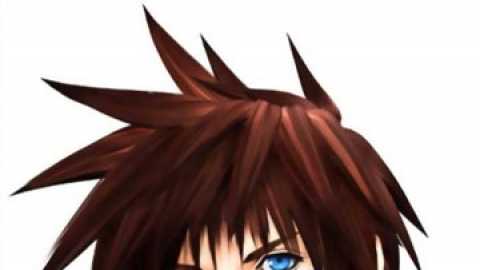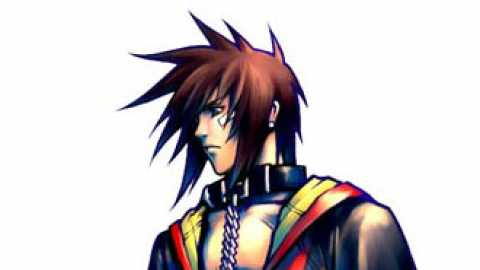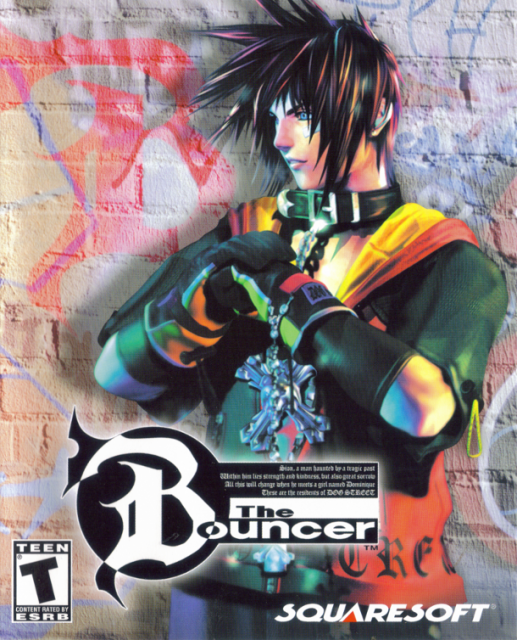Overview
The Bouncer, developed by Dream Factory and Squaresoft, was the first game published by Squaresoft for the PlayStation 2 console, launched in Japan on December 23, 2000, and in the U.S. on March 5, 2001. The game was directed by fighting game pioneer Seiichi Ishii (who created the Virtua Fighter, Tekken and Tobal franchises and Ehrgeiz) along with Squaresoft's Takashi Tokita (who designed Final Fantasy IV and directed Chrono Trigger and Parasite Eve).
The game is a beat 'em up with three playable characters, Sion Barzahd, Volt Krueger, and Kou Leifoh, each with their own distinct fighting styles. The game also features an experience system that allows each of the player characters to grow stronger and learn new moves over the course of the game. The progression of the game's plot is also dependent on which bouncer the player chooses to control during specific sections of the game.
Innovations and Legacy
Like earlier Dream Factory & Squaresoft collaborations, such as Tobal, Bushido Blade, and Ehrgeiz, The Bouncer used novel design and presentation ideas, but its experimental nature divided critics. While the game itself is not commonly remembered as a high point in the PS2's library, some of its features were popularized by more successful games and became widely-used.
Graphics Engine and Shading Filters
The game's presentation and production values were considered groundbreaking, particularly due to its introduction of innovative shading techniques, most notably what would later be called a light bloom effect, which critics at the time described as a "glowing" effect that created "a unique gloss that's never been used before with such success." This effect was used in order to create a more cinematic movie-like look, as well as to compensate for the PS2's lack of anti-aliasing. The Bouncer also introduced a depth-of-field (DOF) effect, blurring the background or foreground during cinematic cutscenes. Both the bloom and DOF effects are now widely used in modern action games, and more generally, The Bouncer was a precursor to modern shaders.
According to director Takashi Tokita in a 2001 interview: "No matter how many polygons you use or how realistic the textures are, without filters and lighting, CG pictures will be of a quality lower than that of a figurine. In order to create atmosphere, we spent much time on filters and lighting. We adjusted each scene in detail with an editor that conducted parameter adjustments on the actual hardware."
Juggling Physics Engine
The Bouncer also introduced a new juggling type of ragdoll physics engine to third-person action games, allowing the player to launch enemies into the air with an attack and keep them suspended by striking them repeatedly. Enemies can also be thrown or otherwise knocked into one another, causing all of them to take damage at once. This juggling type of ragdoll physics was later refined and popularized by the Devil May Cry series.
RPG Elements and Cinematic Storytelling
And finally, while Dream Factory / Squaresoft had previously introduced RPG elements to the beat 'em up genre with the Tobal series, The Bouncer was the most RPG-like beat 'em up released up until then, with an emphasis on character development systems and branching storylines. It was also the most cinematic beat 'em up released up until then, with a heavy emphasis on storytelling through movie-like cutscenes. The game's style of cinematic storytelling and RPG elements would later become popular in 3D hack & slash action games, such as the Onimusha, Devil May Cry and God of War series.
Plot
Bouncers guard the various bars located along Dog Street overlooked by the ominous Mikado Building. Sion, Kou, and Volt are bouncers who work to protect their bar, Fate. Fifteen year old Dominique has become somewhat of a mascot for Fate ever since Sion found her lost in the city. One day Mikado Special Forces abduct Dominique and it is up to Sion, Kou, and Volt to rescue her.
Dauragon C. Mikado is the current CEO of the Mikado Corporation. Being the adopted son of a former CEO, he was trained from birth in order to perform in his current position. He is responsible for Dominique's kidnapping. It's up to the three bouncers to figure out why, rescue Dominique, and put a stop to any other plans he may have.
Gameplay and Story Progression
The game's structure follows the same pattern throughout. As a cutscene ends, the player must choose one of the three bouncers to control in the following gameplay segment, with the others controlled by the CPU. Once the gameplay segment is over, the player will receive Bouncer Points, the game's equivalent to Experience Points, which can be spent to upgrade the selected bouncer's maximum life capacity, attack and defense power, or be used to unlock special attacks. The game will then resume with another cutscene with the point of view and depiction of key events dependent on the bouncer the player controlled during gameplay. Depending on which bouncer or bouncers the player controls over the course of the game, unique events or battles may become available.
Battle Controls
The basic controls are the same for each bouncer:
- Square Button: Mid-level attacks
- Triangle Button: High attacks
- X Button: Low attacks
- Circle Button: Jump attacks
- L1: Triggers a special attack when pressed with one of the basic attack buttons.
- R1: Guard
- R2: Triggers a Trinity Rush attack
The Trinity Rush is a special technique only available in story mode when all three bouncers are present. During the fight, if a CPU-controlled bouncer gives a verbal cue, the R2 button can be pressed to perform a special attack with all three bouncers.
Modes of Play
Story Mode
Follows the stories of Sion, Volt, and Kou as they fight to rescue Dominique. Details of the storyline and the game's ending will differ depending on which characters the player chooses to control before each gameplay segment. Characters encountered in the story mode can be unlocked for use in the game's other modes.
Extra Game
A New Game feature that allows the player to start the story mode from the beginning with powered-up characters.
Survival Mode
A single-player mode in which the player can select any unlocked fighter and fight through a series of enemy waves.
Versus Mode
The Bouncer has two forms of multiplayer. The standard versus mode allows for up to four players to participate if a PS2 multitap accessory is connected in a free-for-all battle. The second mode is a two-player team battle mode in which each player selects one player to control and two AI allies and face off with the goal of knocking out the other team's leader.
Development
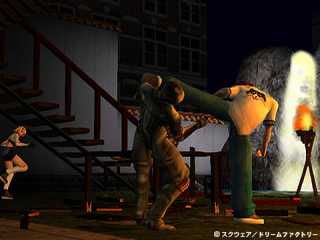
The game's developer, Dream Factory, wanted The Bouncer to be more of a beat'em up and to include destructible environments and weapons. Square was unhappy with the game, feeling that the graphics should be better and have more of a movie-like feel. Dream Factory rebuilt the game to make The Bouncer what it is today.

 PlayStation 2
PlayStation 2

